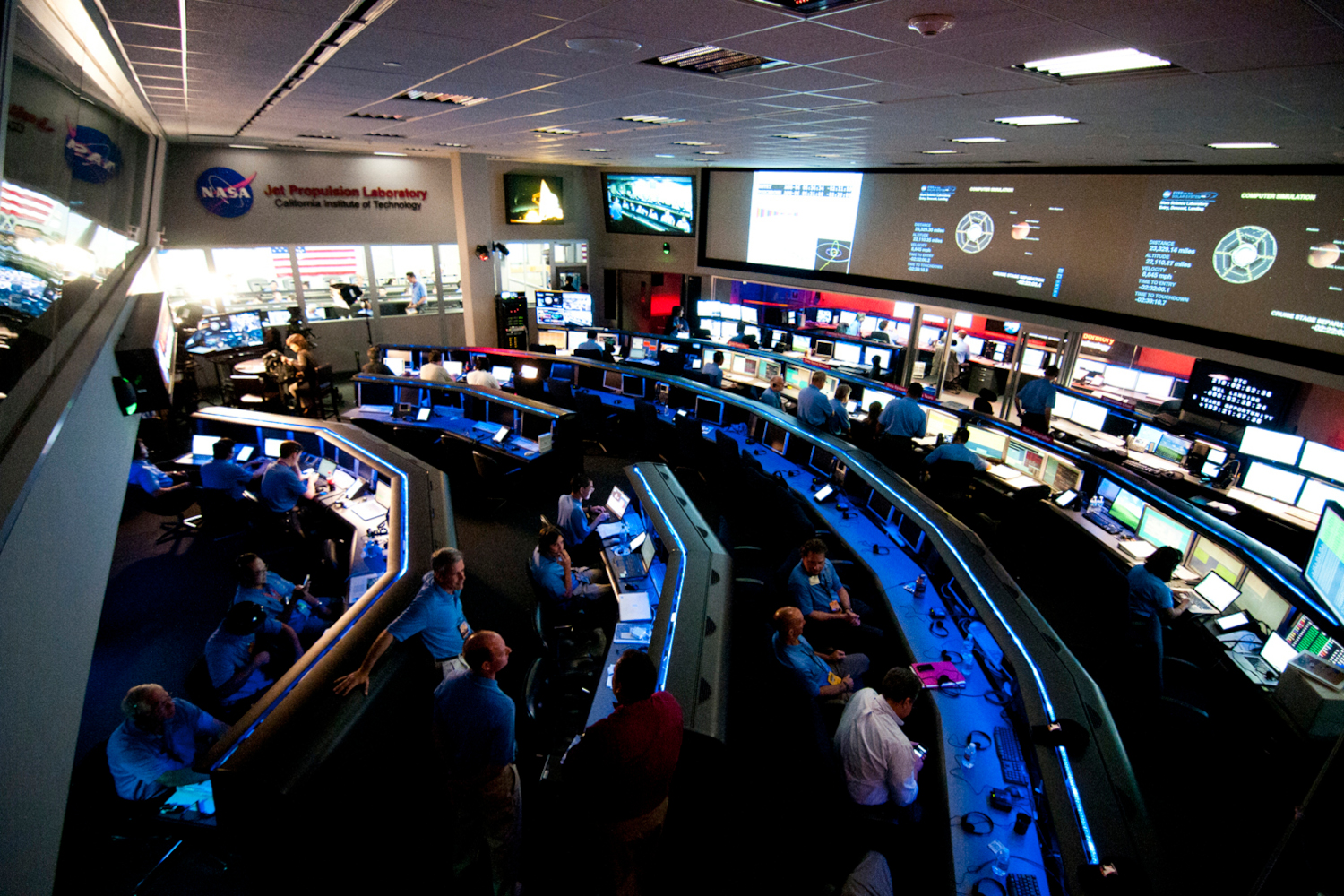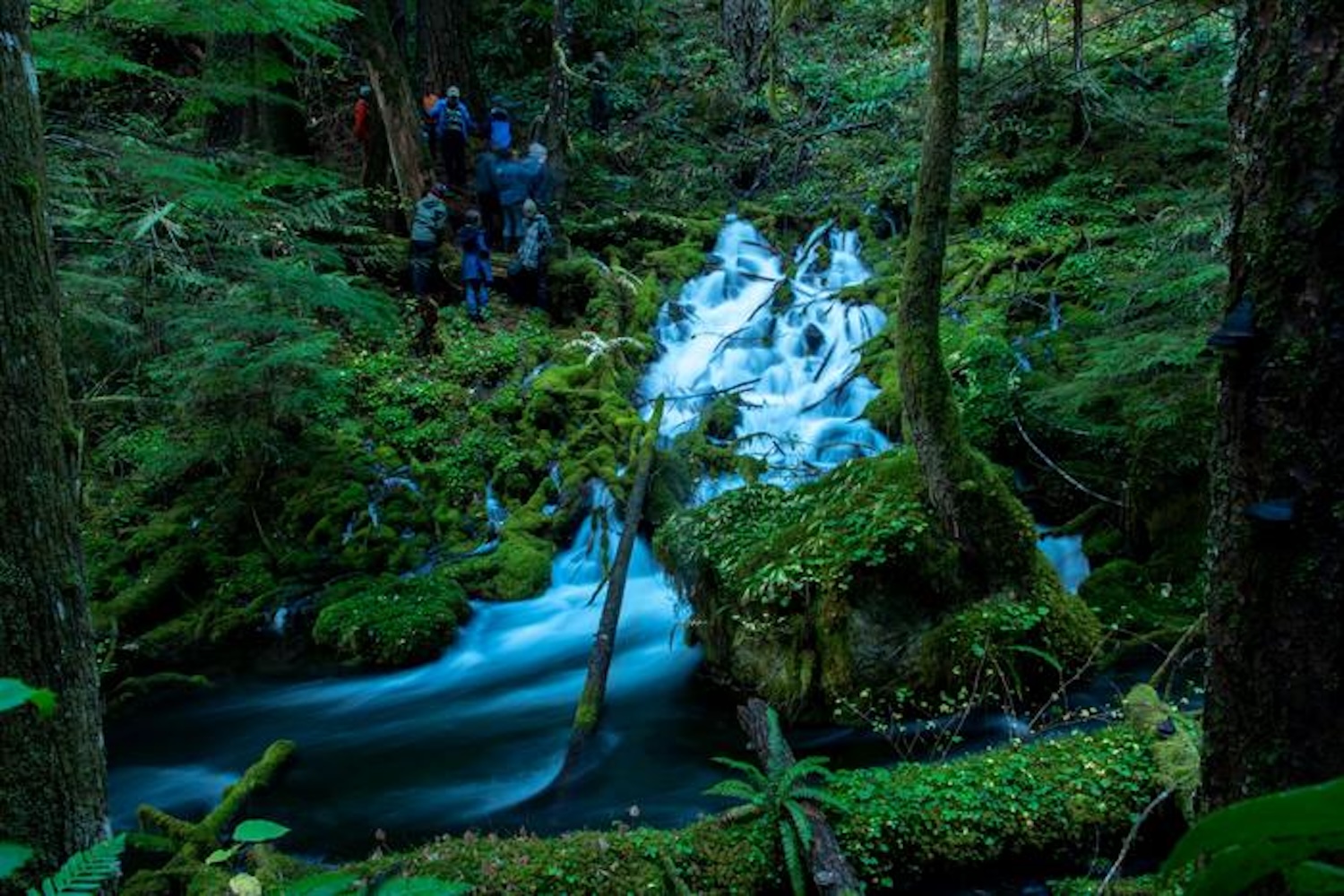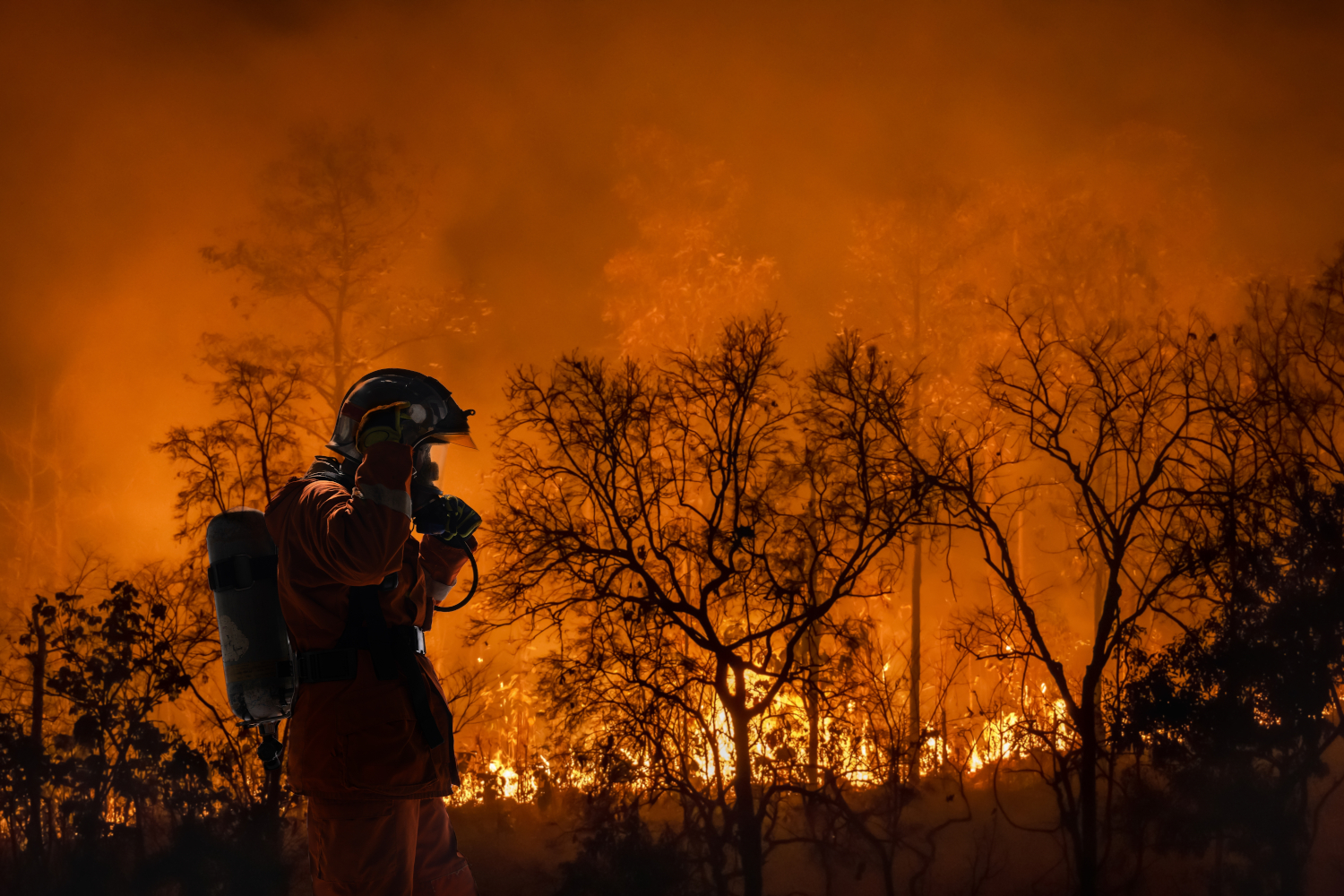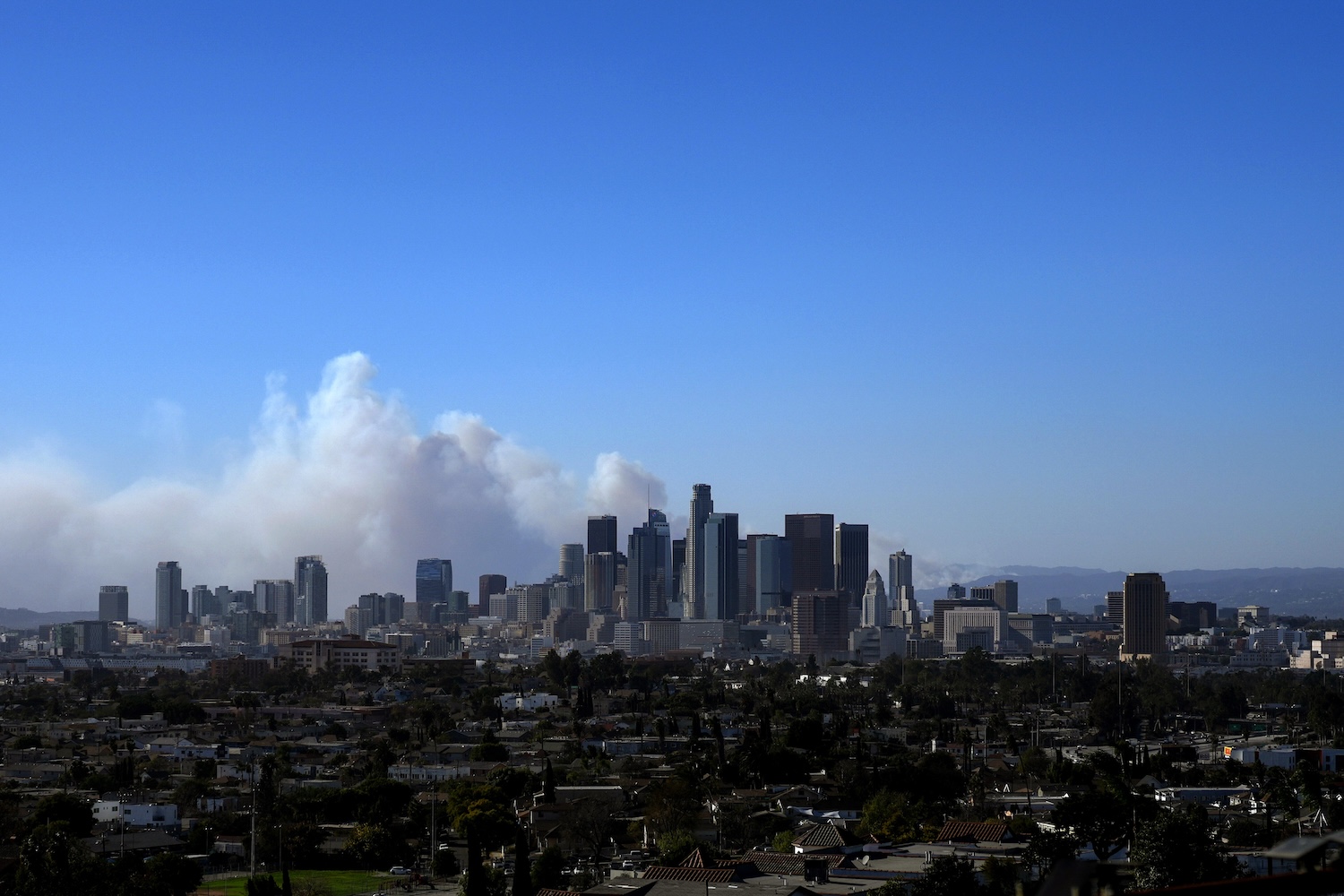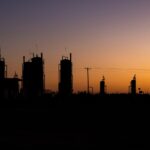One big myth about Los Angeles that keeps resurfacing during the drought is that LA is a desert. But that’s wrong—it gets quite a bit of rain every year. The key to preventing scarcity is rethinking how to use the water that gets delivered there naturally. And one simple idea around this concept might work better than any other drought “solution” out there.
This idea is the brainchild of Hadley and Peter Arnold (yes, they are partners in life and in work) who run the Arid Lands Institute, a think tank based out of Woodbury University in Burbank, California. Their work not only focuses on LA during this cycle of drought, but also looking at the bigger trends of climate change that will affect the hydrologic cycle worldwide, says Hadley: “Humid regions are seeing larger storm events, arid regions are seeing longer drought periods, with less frequent but more intensive rain.”
The biggest problem with most urban water systems is that half or more of many cities’ water comes from snowmelt–which often has to travel a great distance at great economic and environmental cost.
LA’s water system, for example, relies on its supply from snowpack in the distant Sierras; a supply that seemed predictable and infinite 100 years ago. We now know that’s not true—this year’s snowpack is at 5 percent of normal. The shift that needs to occur is moving LA’s primary source of water from imported snowmelt to captured stormwater, says Hadley. “While it seems like it may never rain again here in LA, when it does, we will need to bank it, complementing whatever imported snowmelt assets we still have. We can’t afford to let stormwater run off.”
When it does rain in LA, you can get a crystal-clear demonstration of how the city is designed to rid itself of water by standing on a bridge over the Los Angeles River. Asphalted-over streets and parking lots funnel water into the storm drains, which empty into the river’s concrete-lined chute. Expediently and efficiently, all the stormwater is flushed into Pacific Ocean, a perfect illustration of these antiquated policies.
In fact, just today, LA debuted a plan to capture, clean and reuse that stormwater before it hits the ocean. But an even better idea is a distributed approach, the Arnolds say: Capturing stormwater not at one location, or even several centralized locations, but literally everywhere in the city. Surfaces in the city would be explicitly designed to either collect stormwater–which could be treated for immediate use–or let it sink into the ground to recharge local aquifers. The infrastructural changes would not even have to be that dramatic: redesigning a roof, installing stormwater cistern, replacing cement parking lots with permeable surfaces and landscaping.
In an Arid Lands study looking at the San Fernando Valley region of LA County where Burbank is situated, they found 40,000 sites which would work as these collection areas. With LA’s limited but existent rainfall, just those sites alone could potentially yield as much as 92,000 acre-feet of water—enough water to sustain 360,000 households at LA’s current usage rates for a year or 500,000 families with conservation measures in place. That’s not quite enough to provide water for all 1.8 million residents of the San Fernando Valley—but it would help tremendously.
While there are some neighborhoods in LA which are already being re-engineered in the way the Arnolds describe, implementing something like this at the city scale—especially a city the size of LA—is what’s daunting. Even the LADWP’s plan will take a long time to hit the ground. That’s why Arid Lands has designed a tool which can help get their plan into the hands of people at the neighborhood scale. Working with the architecture firm Perkins+Will, the Arnolds have developed something called HAZEL, suite of software for designing and testing those infrastructure changes to capture and store water.
“Our tool puts high-resolution data into the hands of not just water specialists or professional water managers, but property owners, neighborhood councils, community development groups, agents of change who together can look at roof capture, neighborhood cisterns, rain gardens,” says Hadley. “They can model neighborhood scenarios and test impacts on the LA basin system as a whole. Within this framework, each stakeholder group has the opportunity to plan and perform an optimal role within a smart water grid.”
If this sounds familiar, it’s a lot like the call for distributed solar generation, the idea that energy should be collected as close as possible to where it’s used. In the same way a solar panel on your house can become a backyard power plant that gives you renewable energy independence, Hazel would allow Angelenos to untie themselves from the water grid—or at least the part of the grid which requires water to travel 300 miles or more to your door.
Spreading grounds are key to LADWP’s plan to capture stormwater and treat on a larger scale
The LADWP plan is very progressive and it will help give momentum to the Arid Lands Institute’s work. But the Arnolds’ idea not only moves cities away from snowpack dependence—a system which is not sustainable in any way—it also allows residents to take a neighborhood-level approach to water. Like energy systems, or even food systems, the move towards localized generation and distribution is the future. This empowers every property owner, every block, every neighborhood council, to make the right decisions about their water use.

